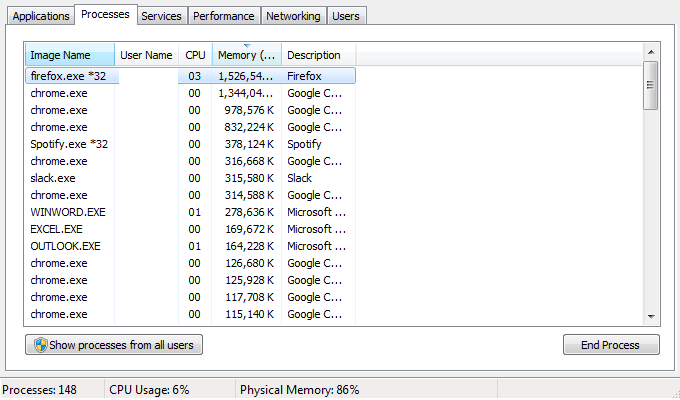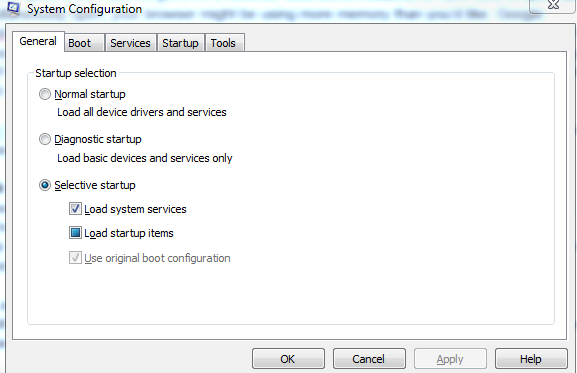
By Heather Hamilton, contributing writer
A slow-running computer is perhaps the most frustrating thing out there, whether you’re working, gaming, or browsing the internet. Fortunately, there is no shortage of tips and tricks to get your machine working more quickly in a short amount of time. No matter your level of PC knowledge, you can troubleshoot and fix your problem with these simple suggestions.
If your PC is running slowly, the first thing you should attempt to do is to restart it. Occasionally, this fixes things and saves you the trouble of going further. After you’ve tried a reboot, it may be time to move on to other options.
Where are your resources?
One of the main reasons that a computer may run slowly is a lack of available resources. These things don’t disappear into thin air, so track down what programs are using the Task Manager. By right-clicking on your taskbar and looking at Task Manager (or pressing Ctrl+Shift+Escape), you’ll see a chart that gives you all of the information you need. Click “CPU,” “Memory,” and “Disk” to sort the list.
When you see an application taking up more resources than it should, you should close it either manually or by selecting “End Task” and forcing closure.

Get rid of extras
When you bring home a PC, there’s a fair amount of extra stuff installed on it. Pre-installed software can really slow down your machine and even interrupt your work. To get rid of extra helper programs that you don’t need, press “Start,” “All Apps,” and then right-click to uninstall extras.
To determine what programs might be good candidates for uninstalling, sort the list of apps and review what you actually use, no longer use, etc. Get rid of the extras that are junking up your machine.
While you’re at it, disable startup programs too, which launch when your computer starts. This will save memory and CPU cycles and allow you to log in more quickly. If you have Windows 8, 8.1, or 10, there’s a startup manager in the Task Manager. From there, you can disable programs that you don’t need.
Use a defragging tool
Newer versions of Windows automatically defragment the disk, but Microsoft has given us a pretty basic tool for the job. There are other options available to further boost the speed of your computer. Tech Advisor recommends O&O Defrag or, for a free option that is nearly as effective, Iobit Smart Defrag 5.
These defragging tools only work if your PC has a traditional mechanical hard drive. If you have both an SSD and a hard drive, use it only on the hard drive.
Clean up your web browser
Most people use their computer to access the internet, which means that you’re on your web browser quite a bit. If you’ve got a lot of browser extensions installed or have tons of open tabs simultaneously open, your browser might be using more memory than you’d like. Google Chrome and Mozilla Firefox can easily consume a couple of gigabytes worth of memory if you’ve got 10 or more tabs open. To fix this, go into your browser’s Extensions and Add-ons manager and get rid of those that you don’t need or want. And periodically audit your tabs to see what you don’t really need open.
How-To Geek also suggests enabling click-to-play plug-ins, which will prevent Flash and similar content from loading and using CPU time.
Look for viruses and adware
Malware and adware can run in the background and make your computer slow, so make sure you’re looking for these things. While many people think to check for malware, adware can really slow down your machine as it runs in the background, tracking your internet browsing to provide more advertisements tailored to you.
Use an antivirus program, which will identify problems. Programs like Malwarebytes can also identify PUPs, or potentially unwanted programs, that many other scanners may not identify as unwanted.
BONUS:
Just as you’ve disabled unused background browser extensions hogging up memory, it’s also a good idea to peek into your task manager to see which programs are launching every time your computer boots up. Prevent unnecessary programs from starting up by pulling up the Task Manager tab using Ctrl+Shift+Escape (if you’re a Windows 8 or 10 user). Click the tab explicitly labeled “Task Manager” and disable unneeded startup applications.
Windows 7 users can access this same section by pressing the Windows Key + R, then typing “msconfig.” Once the System Configuration window opens, uncheck “Normal startup” and select “Selective startup.” It’s recommended that you leave “Load system services” checked and not tamper with the items listed in the Services tab. Make sure “Load startup items” is also selected, and then click the Startup tab and uncheck any unnecessary items. For example, do you really need Spotify turning on automatically every time you boot up your rig?

Sources: PC Magazine, How-To Geek, Tech Advisor
Image Source: Pixabay
Advertisement
Learn more about Electronic Products Magazine





